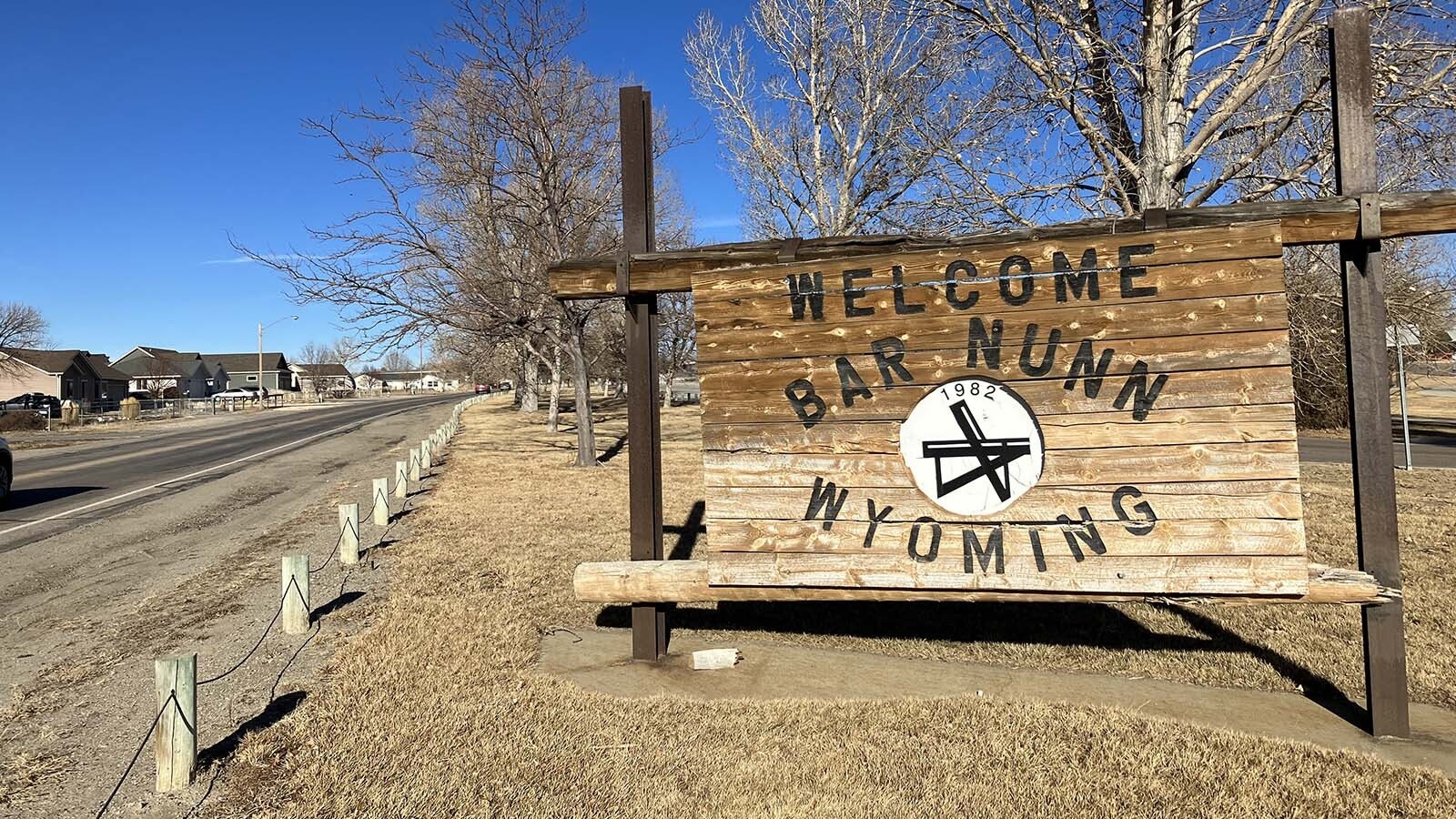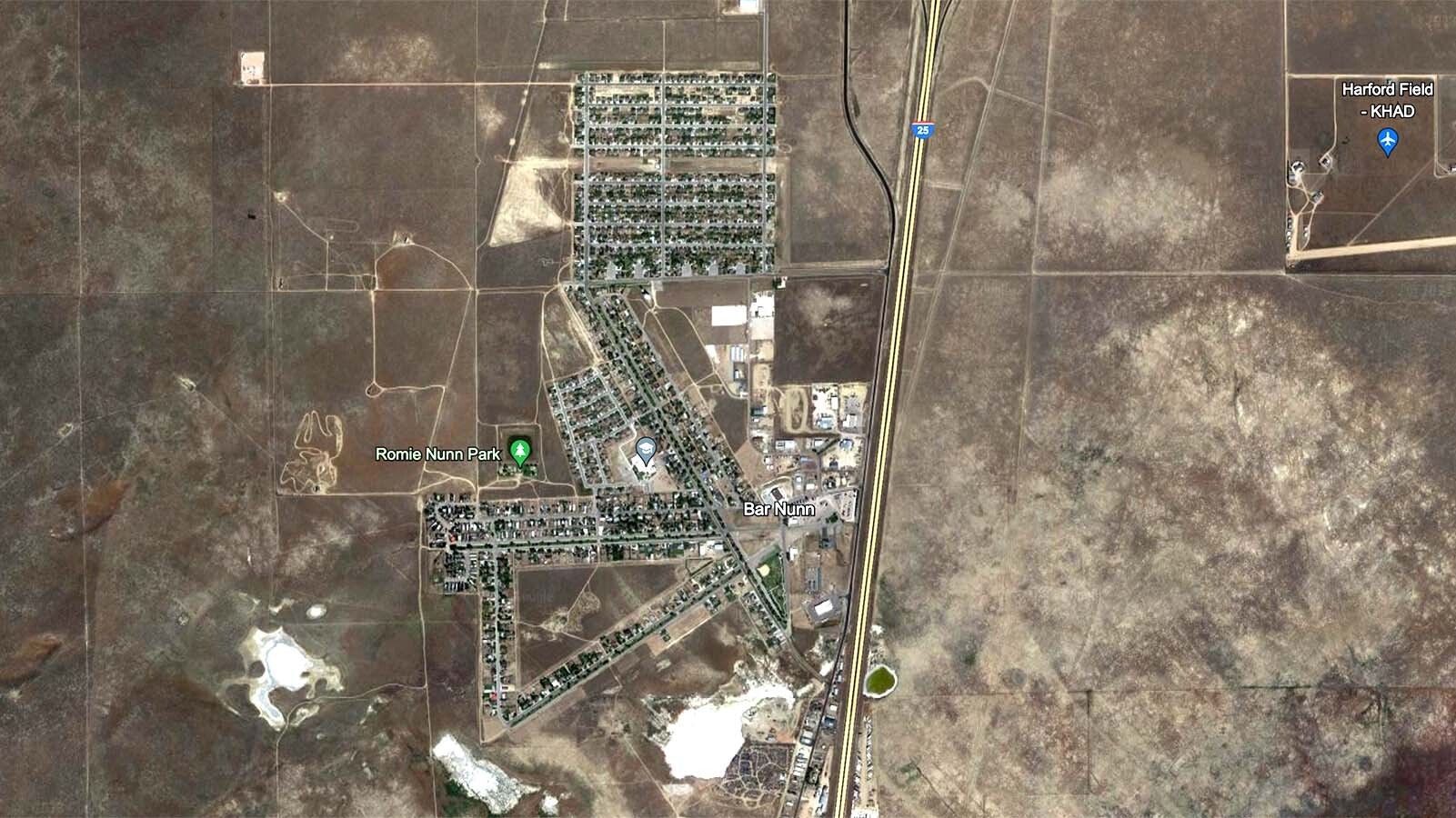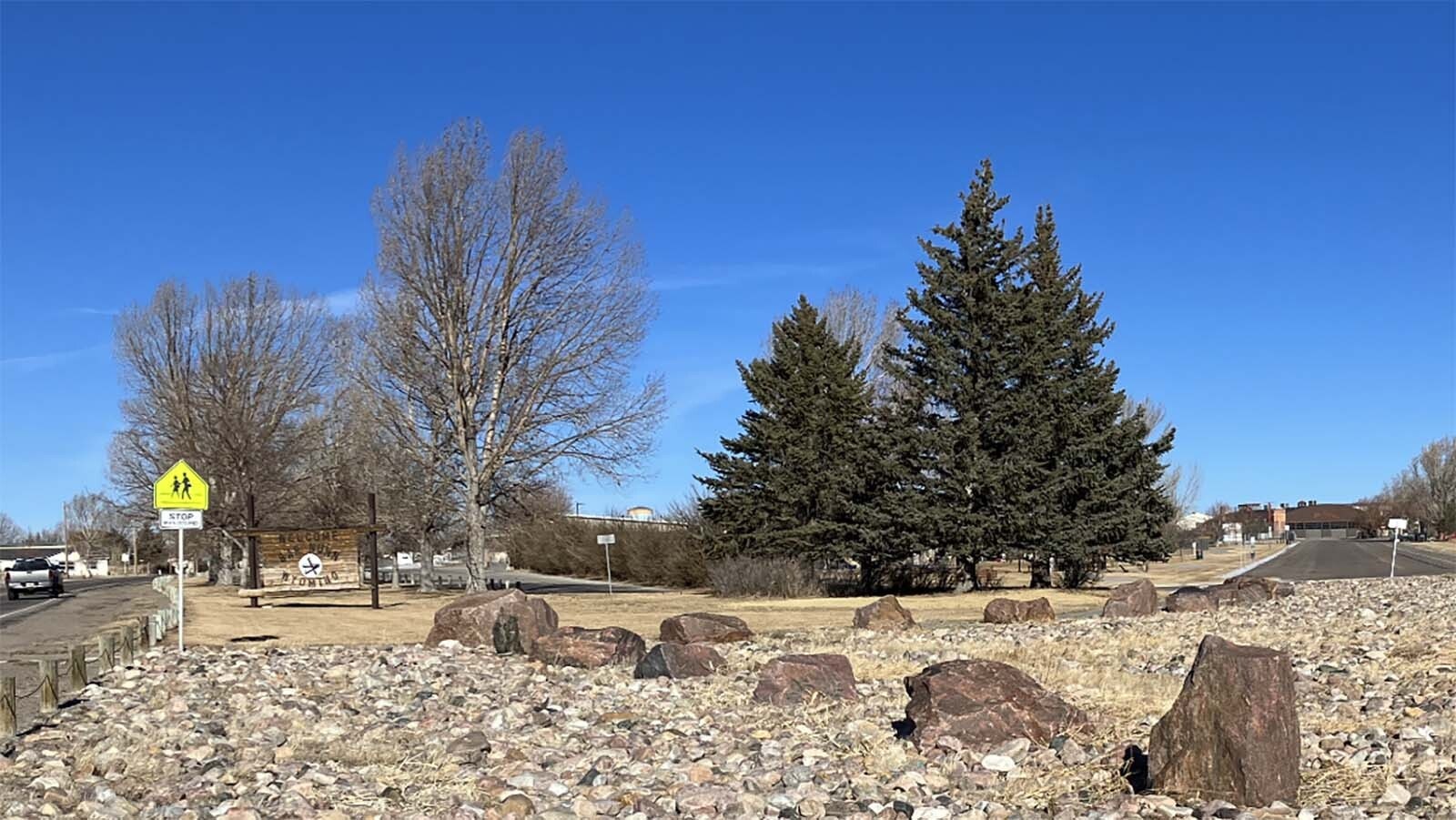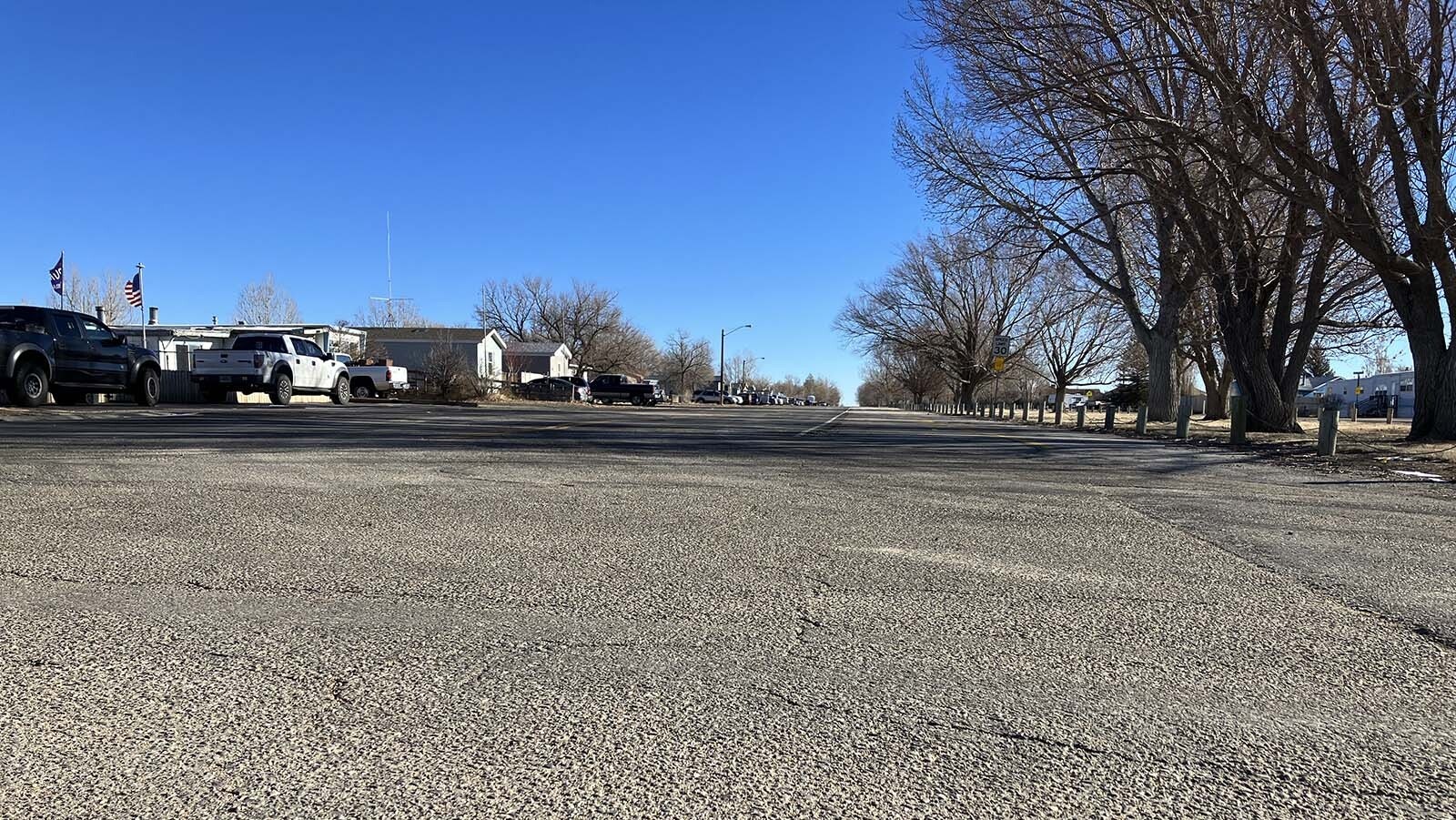BAR NUNN — A World War I pilot, a Casper entrepreneur who became a “water witcher” and a Hollywood icon all are part of the unique and storied history the only Wyoming’s city built on an airport.
That city is Bar Nunn, where, 3,000 people live in houses built along extra wide streets that are former runways and taxiways that were part of Casper’s first airport.
Mayor Peter Phelps confirms the city’s distinctive logo, which depicts the view of airport runways from above, was designed using the configuration of the old Wardwell Field airport that was built in the 1920s. He said living on a former airport ground offers advantages, and some disadvantages.
“It’s nice to have the town lined out the way it is,” he said. “But the downside is the big roadways because they are the former runways. And they did not have a thick base. They require a lot of repairs.”
The History
What those runways now have are houses lining them as well as a lot of history that stretches back to the time when air machines were starting to become useful commercially.
In the late 1920s, a group that included a Maj. Doyen Wardwell, who flew in France during World War I, promoted the need for an airport in the area. Through Wardwell’s efforts and those of others, the airport was built north of Casper and air services started to operate.
In addition to being an executive of the local flight service, Wardwell also was a member of the Wyoming aeronautics board. On Aug. 8, 1929, he took two other men up for a flight. News reports from the time say their aircraft went into a tailspin and crashed in a fiery ball of flame just north of the airport. All aboard were killed.
The city mourned the aviator and visionary who brought air service to central Wyoming, then ironically died in a crash near his airport.
“Thousands of friends of the Casper aviator lined the streets as his casket passed by and stood with bared heads,” The Casper Daily Tribune reported Aug. 12, 1929. “Overhead, four planes circled, piloted by Major Wardwell’s buddies of the air, companions in pioneer aviation.”
New Name, Increased Use
Just months following his death, the airport was renamed in his honor to Wardwell Field.
In 1933, above what are now Bar Nunn runways-turned-streets, Wardwell Field became a place to celebrate the Fourth of July and the skills of members of the U.S. Army Air Reserves from Fort Riley, Kansas.
“The squadron of five to seven planes will put on air maneuvers over the city and Wardwell Field,” stated the Casper Tribune-Herald on June 14. “It will be one of the most sensational air circuses Casper has seen, it is prophesied. Wyoming Air Service planes will join in the flights and will provide sight-see tours during the celebration.”
During World War II, the U.S. Army established its air base northwest of Casper to train bomber pilots and crews, and Wardwell Field continued to serve commercial purposes.
But after the war, the airport’s future was in doubt after the federal government offered the decommissioned air base to Natrona County. The long runways made the old Army air base a superior choice for the future of local air services.
Wardwell Field was going to be history.
Enter Romie Nunn
“I read this ad in the Tribune that they wanted to put it up for auction,” Casper businessman Romie Nunn is quoted in a Feb. 1982, article in the Casper Star-Tribune. “I thought by golly, why don’t I put in a bid?”
He did. And Wardwell Field — and its 640 acres and 6 miles of runways and taxiways — was sold to him for $20,500 in 1954. Nunn’s vision was to make those acres a place for horse lovers to live and raise their animals. But to make that happen he needed water.
An account on the Collectors Weekly website from June 5, 2013, tells how Nunn went after what he needed.
“Our Dad, The Water Witch of Wyoming” shares the observations of Nunn’s children as they grew up going on adventures with their dad as he “witched” for water, then he tried finding oil. He had some success, mostly with water. Initially, he used a willow branch for his instrument of choice and later switched to a copper rod.
“It got to the point where he could tell the difference between an underground pool of water and an underground stream,” his son, Jack, was quoted in the article. “He would follow the stream above ground and at a certain point, based on how he felt the copper rod was reacting, he could give you a fairly good estimate of depth and possible output.”
A local article in the Casper newspaper from the 1950s talked about a well that was 33-feet deep drilled on the former airport property that was “water witched.”
The Housing Begins
By 1958, Nunn made good progress in providing housing opportunities. A June 7 story in the Casper Morning Star carried the news:
“Paved landing strips from 150-feet to 50-feet wide which would make ‘wonderful streets for a community’ and a good view of the mountains has been the formula of plans for one of the largest new home areas in Casper’s history,” the newspaper reported. “Romie Nunn who about four years ago purchased the Wardwell airfield from the county, has put the development of a new community into high gear with the sale of 235 lots facing the air strips and taxiways.”
Nunn’s plans included three parks, a church, a school, a “Western-style” village, tennis courts, rodeo grounds, indoor riding arena, stables, 4-mile bridle path, and a half-mile track for harness racing.
The old hangar from Wardwell Field was to be dedicated to horse shows and riding. People who bought lots would be given space to build a stable by the hangar, and each stable required a log front, tack room, stall, hay, bin, skylight and 20- by 60-foot paddock.
There are also accounts of drag racing on the old runways before the area became more developed.
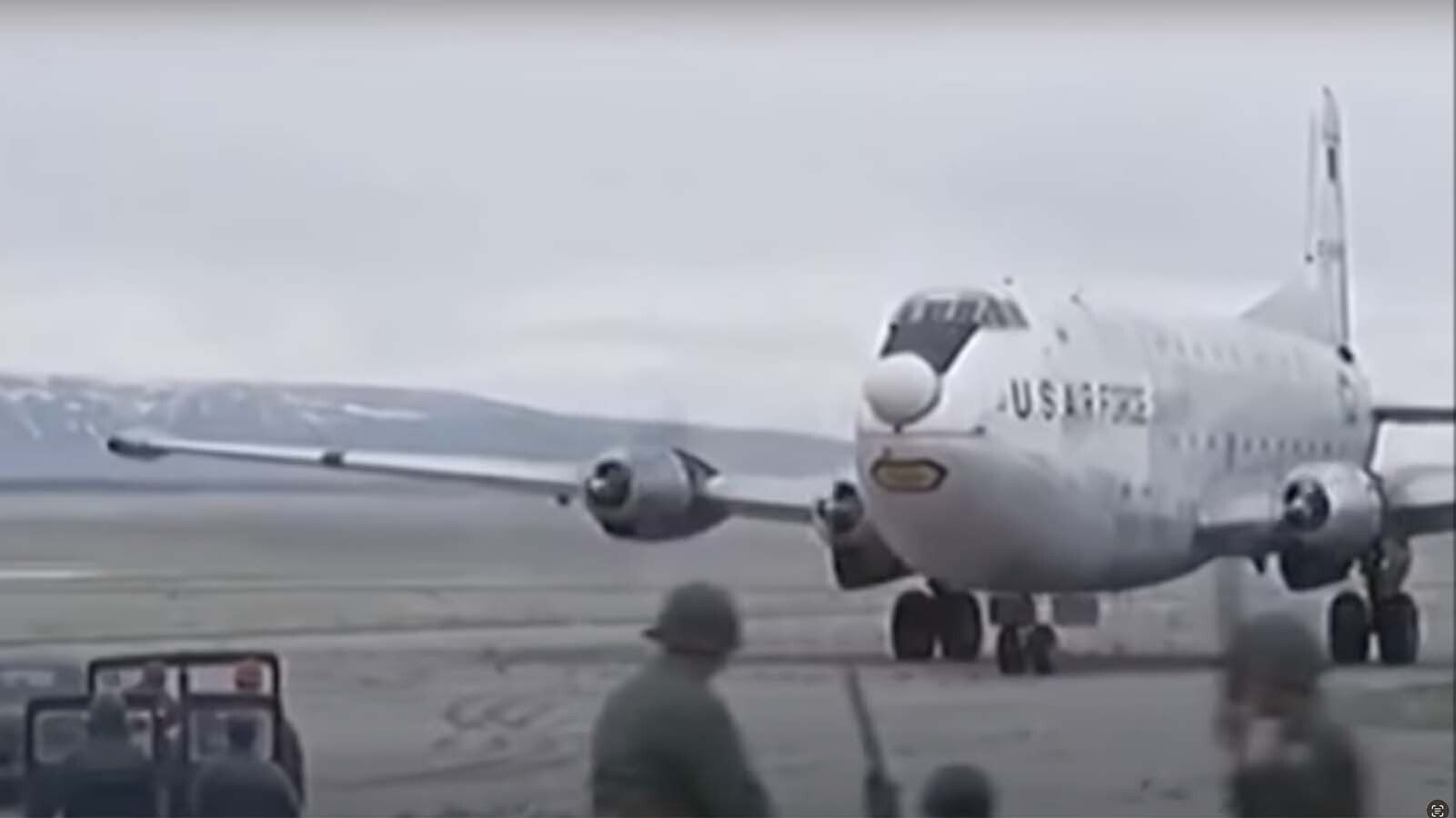
The Duke Pays A Visit
In 1968, Hollywood invaded Casper and the region to do filming for a John Wayne movie called “Hellfighters” that depicted the daring and specialized crews that put out oil well fires.
In addition to filming a blazing staged oil fire outside Casper, the crew needed a place for an airplane scene. They chose former Wardwell Field, and landed a plane and filmed the scene there.
The movie shows Wayne arriving and disembarking from the plane with Casper Mountain in the background.
As the community grew, housing became more important than horses. Nunn, in an apparent nod to his dream, called the community the Bar Nunn Ranch Subdivision. He is said to have registered a brand with the Wyoming Livestock Board.
By the 1970s, maintenance and other issues spurred the community of homeowners to get more formally organized. In 1982, the former airport became a city.
The only remaining features of the former airport are the runways-turned streets and its hangar, which is now a restaurant and events facility appropriately called “The Hangar.”
There also may be one remaining water well, said Mayor Phelps, who moved to the city in 2016, but it serves no official purpose. All the city’s water was long ago connected to the region’s water system.
Romie Nunn died in 1988 at the age of 84. But in his interview in 1982 with the Casper Star-Tribune, he talked about the community that would carry on his name.
“I was always going out there for 20-some years,” he said. “I’m glad to see it. We just hope it will be a good one.”
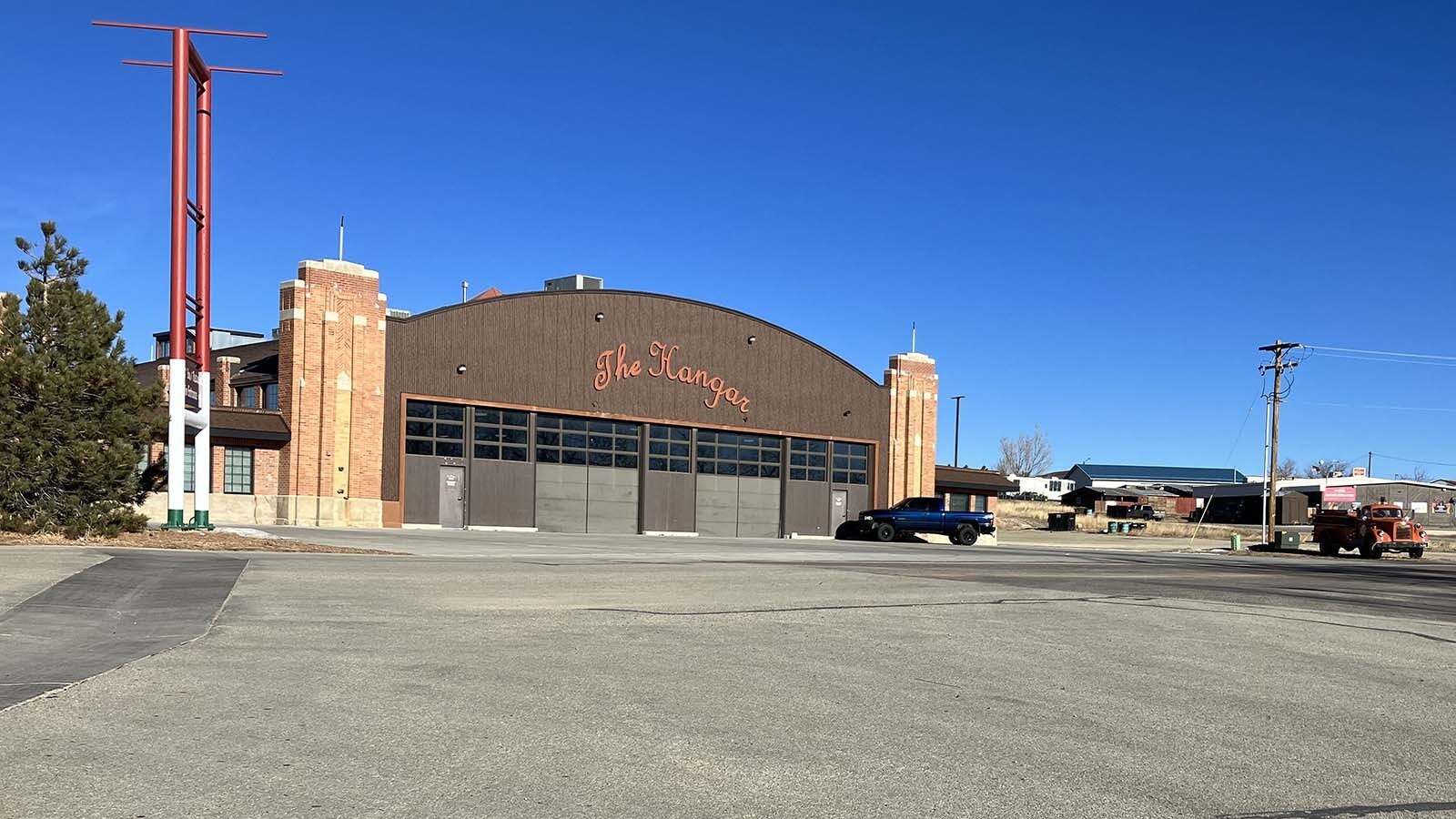
Dale Killingbeck can be reached at dale@cowboystatedaily.com.

